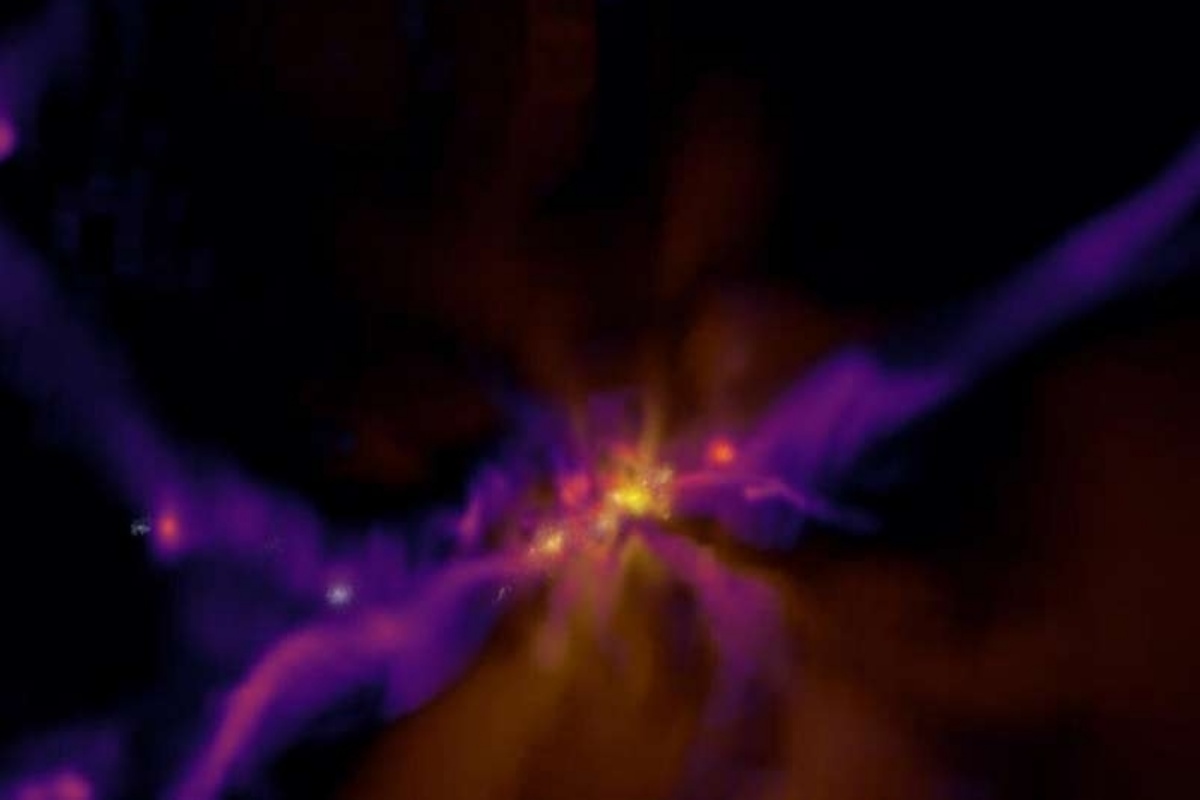G-Dragon of BIG BANG cleared of drug charges
G-Dragon of BIG BANG is cleared of drug charges in a conclusive verdict, putting an end to the investigation.
“We now eagerly await the launch of the James Webb Space Telescope, which we believe has the capability to directly witness cosmic dawn,”

Still of a video showing the formation and evolution of the first stars and galaxies in a virtual universe similar to our own (Photo:Dr Harley Katz, Beecroft Fellow, Department of Physics, University of Oxford)
Stars formed for the first time 250 million to 350 million years after the beginning of the universe, according to a new study.
Researchers at University College London (UCL) and the University of Cambridge examined six of the most distant galaxies currently known, whose light has taken most of the universe’s lifetime to reach us. They found that the distance of these galaxies away from Earth corresponded to a “look back” time of more than 13 billion years ago, when the universe was only 550 million years old.
Advertisement
Analysing images from the Hubble and Spitzer Space Telescopes, the researchers calculated the age of these galaxies as ranging from 200 to 300 million years, allowing an estimate of when their stars first formed.
Advertisement
“Theorists speculate that the universe was a dark place for the first few hundred million years, before the first stars and galaxies formed,” said lead author Nicolas Laporte from Cambridge.
“Our observations indicate that cosmic dawn occurred between 250 and 350 million years after the beginning of the universe, and, at the time of their formation, galaxies such as the ones we studied would have been sufficiently luminous,” Laporte said.
The findings are detailed in the journal Monthly Notices of the Royal Astronomical Society.
The researchers analysed starlight from the galaxies as recorded by the Hubble and Spitzer, examining a marker in their energy distribution indicative of the presence of atomic hydrogen in their stellar atmospheres. This provides an estimate of the age of the stars they contain.
This hydrogen signature increases in strength as the stellar population ages but diminishes when the galaxy is older than a billion years. The age-dependence arises because the more massive stars that contribute to this signal burn their nuclear fuel more rapidly and therefore die first.
The researchers noted that NASA’s James Webb Space Telescope, scheduled to launch in November, will be sensitive enough to observe the birth of galaxies directly.
“We now eagerly await the launch of the James Webb Space Telescope, which we believe has the capability to directly witness cosmic dawn,” said Professor Richard Ellis from UCL’s Physics and Astronomy department.
“The quest to see this important moment in the universe’s history has been a holy grail in astronomy for decades. Since we are made of material processed in stars, this is in some sense the search for our own origins,” he added.
Advertisement